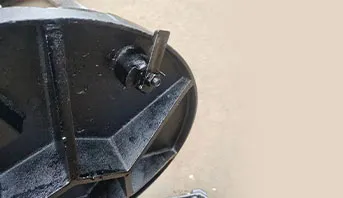galvanized nails in pressure treated lumber
The Use of Galvanized Nails in Pressure Treated Lumber A Comprehensive Overview
When constructing outdoor structures such as decks, fences, and pergolas, the choice of materials can significantly impact the longevity and durability of the project. One crucial aspect often overlooked by DIY enthusiasts and contractors alike is the type of fasteners used. Specifically, the use of galvanized nails in pressure-treated lumber is a topic worthy of discussion, as it plays a pivotal role in ensuring the structural integrity and lifespan of outdoor projects.
Understanding Pressure-Treated Lumber
Pressure-treated lumber is wood that has undergone a chemical treatment process to enhance its resistance to moisture, decay, and insect damage. This treatment typically involves forcing chemical preservatives deep into the wood fibers under high pressure. While this process significantly increases the wood's durability, it also introduces some concerns regarding the compatibility of certain materials used alongside it.
The Importance of Galvanized Nails
Galvanized nails are metal fasteners coated with a layer of zinc to protect against rust and corrosion. This aspect is particularly critical when working with pressure-treated lumber, which often contains preservatives that can be corrosive to certain types of metals. Here’s why using galvanized nails is essential in this context
1. Corrosion Resistance The primary benefit of galvanized nails is their resistance to corrosion. Since pressure-treated lumber is designed for outdoor use and exposed to elements like rain, humidity, and temperature fluctuations, galvanized nails ensure the structural components of a project remain secure over time.
galvanized nails in pressure treated lumber

2. Compatibility with Chemicals Many woods in pressure-treated lumber contain copper-based preservatives, which can be corrosive to non-galvanized steel and other metals. Using galvanized nails mitigates this risk, as the zinc coating provides a barrier against chemical reactions that can lead to fastener degradation.
3. Longevity of Structures By using galvanized nails, builders can expect a longer life for their constructions. The enhanced resistance to rust means that nails will remain intact longer, preventing issues such as nail popping or structural failure due to corrosion-related weakening of fasteners.
Choosing the Right Type of Galvanized Nails
When selecting galvanized nails for use with pressure-treated lumber, it's important to consider the type of galvanization method used. There are generally two methods hot-dip galvanization and electro-galvanization. Hot-dip galvanization involves immersing the nails in molten zinc, resulting in a thicker coating that offers superior corrosion resistance. Conversely, electro-galvanization uses an electrochemical process to deposit a thinner layer of zinc, which may not provide the same level of protection, especially in harsher environments.
Builders are often advised to choose hot-dip galvanized nails for outdoor applications, particularly when using pressure-treated lumber, as they tend to withstand the rigors of the elements more effectively.
Conclusion
In summary, the use of galvanized nails when working with pressure-treated lumber is essential for any outdoor construction project. The advantages offered by galvanized fasteners, such as enhanced corrosion resistance, compatibility with wood preservatives, and overall longevity, make them the best choice for ensuring the durability and stability of outdoor structures. As the saying goes, a chain is only as strong as its weakest link, so choosing the right fasteners is a critical step in building robust and long-lasting outdoor projects. Always prioritize quality materials, including the correct type of nails, to achieve the best results in any construction endeavor.
-
Space-Saving Chain Fence Hacks Vertical Gardening with Cyclone MeshNewsJul.16,2025
-
Innovations in Iron Nail Wire Production for Modern ConstructionNewsJul.16,2025
-
Creative Uses of Wire Netting Fence in Modern Landscape DesignNewsJul.16,2025
-
Barbed Wire Fence Innovations in Anti-Climb TechnologyNewsJul.16,2025
-
Architectural Uses of Umbrella Nails for Aesthetic Roof DesignsNewsJul.16,2025
-
Architectural Uses of Razor Barbed Wire in Secure Urban DesignNewsJul.16,2025




